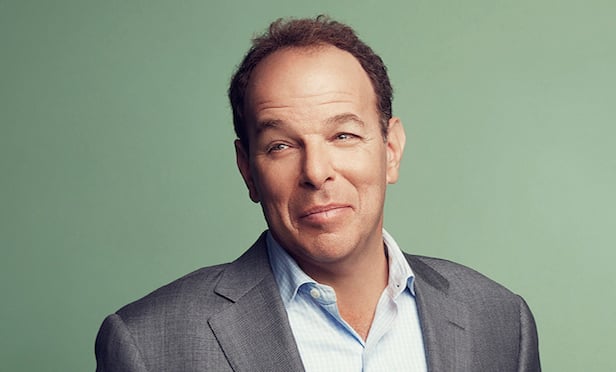 Doug Harmon, chairman of capital markets, Cushman & Wakefield
Doug Harmon, chairman of capital markets, Cushman & Wakefield
NEW YORK CITY—“One out of every three people who live in Manhattan is a millennial,” Doug Harmon told journalists at a recent press briefing. He highlighted that statistic as a unique indicator which bodes well for real estate. Baby boomers are also selling their homes and moving back into the city. “Everybody still wants to live in New York,” said the chairman, capital markets at Cushman & Wakefield. “Manhattan has recovered from so many different, unique crises, problems and storms.”
Using a year within the Great Recession as a starting point, Harmon compared data for the nine years before with the nine years after 2009.
For 2009, Cushman & Wakefield recorded $4.3 billion in Manhattan transactions. That year there were only five deals over $25 million across the entire city, he said. But Harmon pointed out a “step ladder in real estate growth” for Manhattan's transaction dollar volume for the cycle following 2009.
The nine years preceding 2009 averaged $21.2 billion in Manhattan transaction volume. The average for the nine years following 2009 amounted to $32.9 billion. In 2015, the borough's transaction volume hit a record high at $63.2 billion. In 2017, it dropped to $22.5 billion. But in 2018 it rose to $32.3 billion. Harmon pointed out although 2018 was 49% to 50% off the peak of 2015, it was up 44% from 2017.
What's Harmon's explanation for the market's strength and resiliency?
Harmon pointed to not only the unique desirability of Manhattan real estate but also to institutional investors.
“The new normal is we have become institutionalized. Real estate is a legitimate, stable, alternative asset class now,” he said. “There is so much more capital around the world that's institutional in nature trying to increase their allocations and compete for our major markets in the US.”
This mismatch of abundant capital chasing so little available product props up and increases real estate prices, he said. All the institutional money has made it increasingly competitive to buy large real estate. As a result, he has observed people holding onto assets longer and an increase in recapitalizations.
Harmon noted a significant difference between 2017 and 2018: “The real story is the return of the $250 million to $1 billion deals.” In 2017, there were 22 deals in this dollar bracket. This almost doubled, jumping 86% to 41 deals in 2018. He attributed this partly to less reliance on foreign capital, and partly as this being a home for more domestic capital.
With the billion dollar transactions in Manhattan prior to 2009, a chart with data from Real Capital Analytics, going back to 2005, showed only domestic capital. In the post-2009 cycle, foreign capital entered this market. But Harmon noted in the last couple of years, foreign capital has slowly diminished in the billion dollar deal space. “It doesn't mean they are going away,” said Harmon. “What it means is we do not need foreign capital to drive value or to drive activity. There is so much domestic capital.”
Although some industry experts have expressed nervousness with the US-China trade war, Harmon underscored that in 2018 foreign investment in US real estate was led by Canada, Germany, the Netherlands and Australia.
“Even with China out of the market, we haven't seen a difference,” said Harmon. “It would be nice to have them in. They have a longer term horizon. They understand real estate. They are aggressive.” But the absence of Chinese investment has been more than made up by other pockets of capital, he added.
The US remains an attractive destination for capital because it provides diversification, growth, stability and liquidity.
In wrapping up, Harmon characterized the market as currently in a state of equilibrium. “Sellers feel they are capitulating too much and buyers feel they are stretching too much.” Neither side being too happy indicates a certain balance, meaning it's not overly a seller's or buyer's market. Harmon noted markets have been resilient to rising interest rates, and the Fed has indicated a slowdown of additional increases in the coming year.
Referencing world events including political ones, Harmon said, “These are unusual times we are living in now.” But he nonetheless concluded, “We are positive and bullish on 2019.”
© Touchpoint Markets, All Rights Reserved. Request academic re-use from www.copyright.com. All other uses, submit a request to [email protected]. For more inforrmation visit Asset & Logo Licensing.







